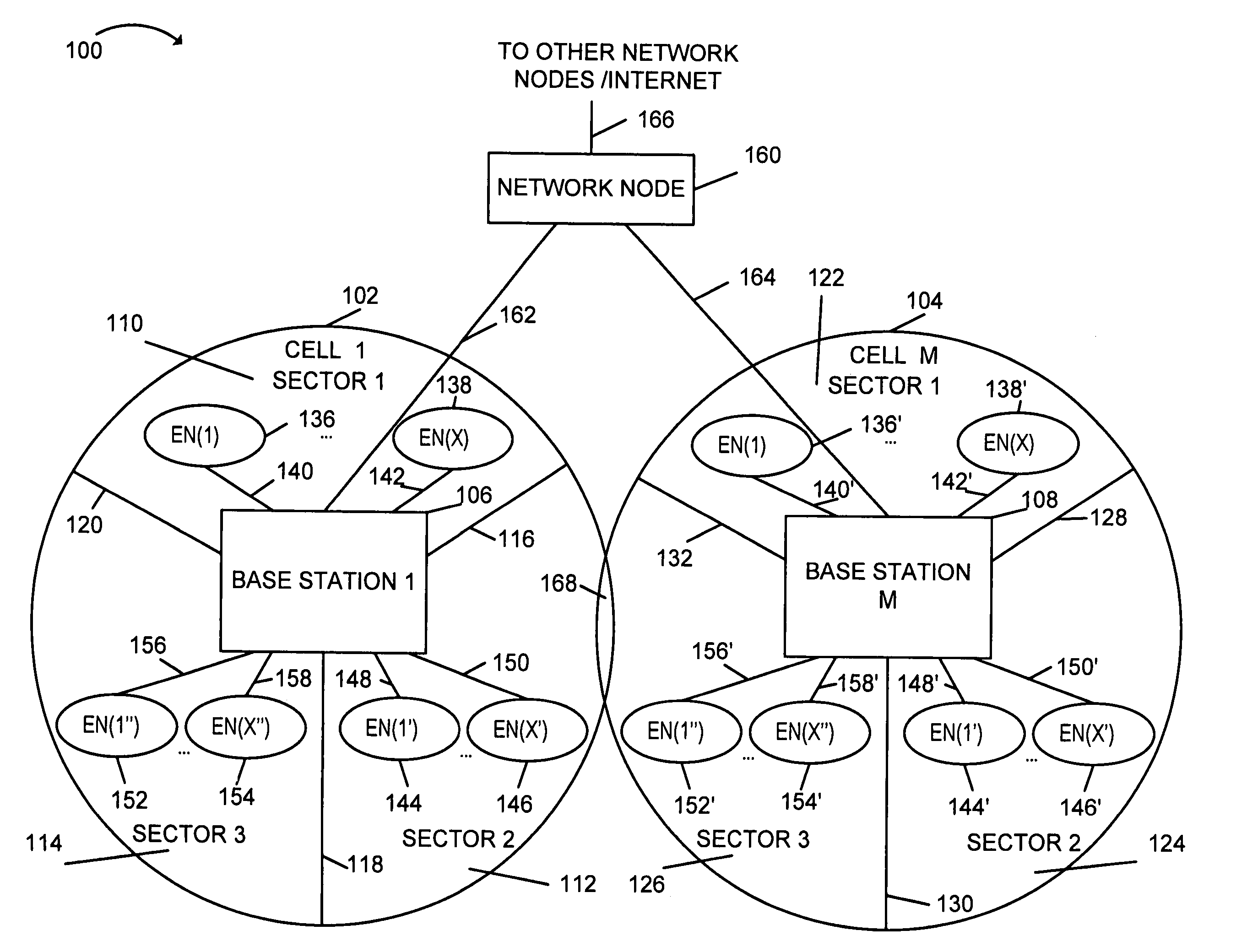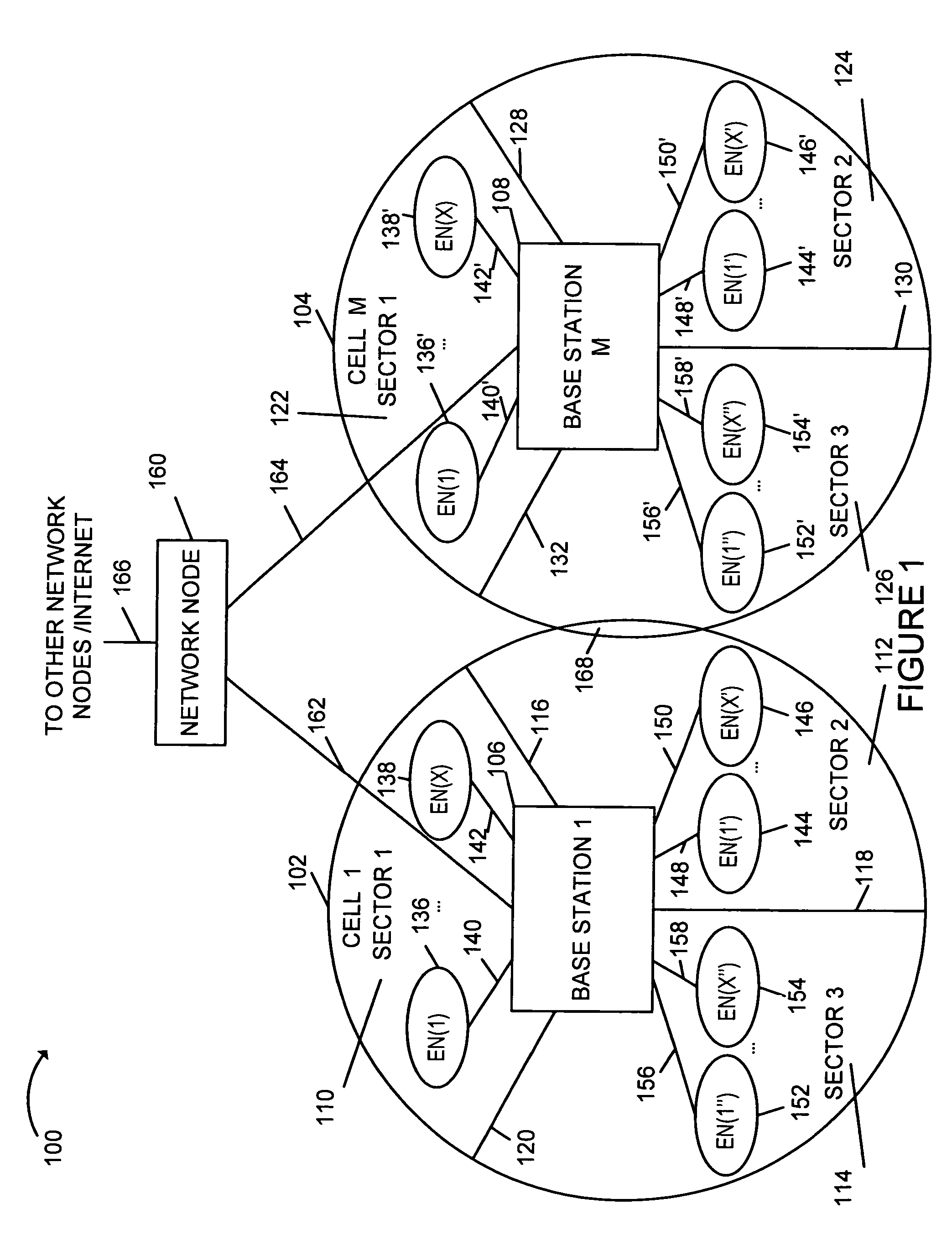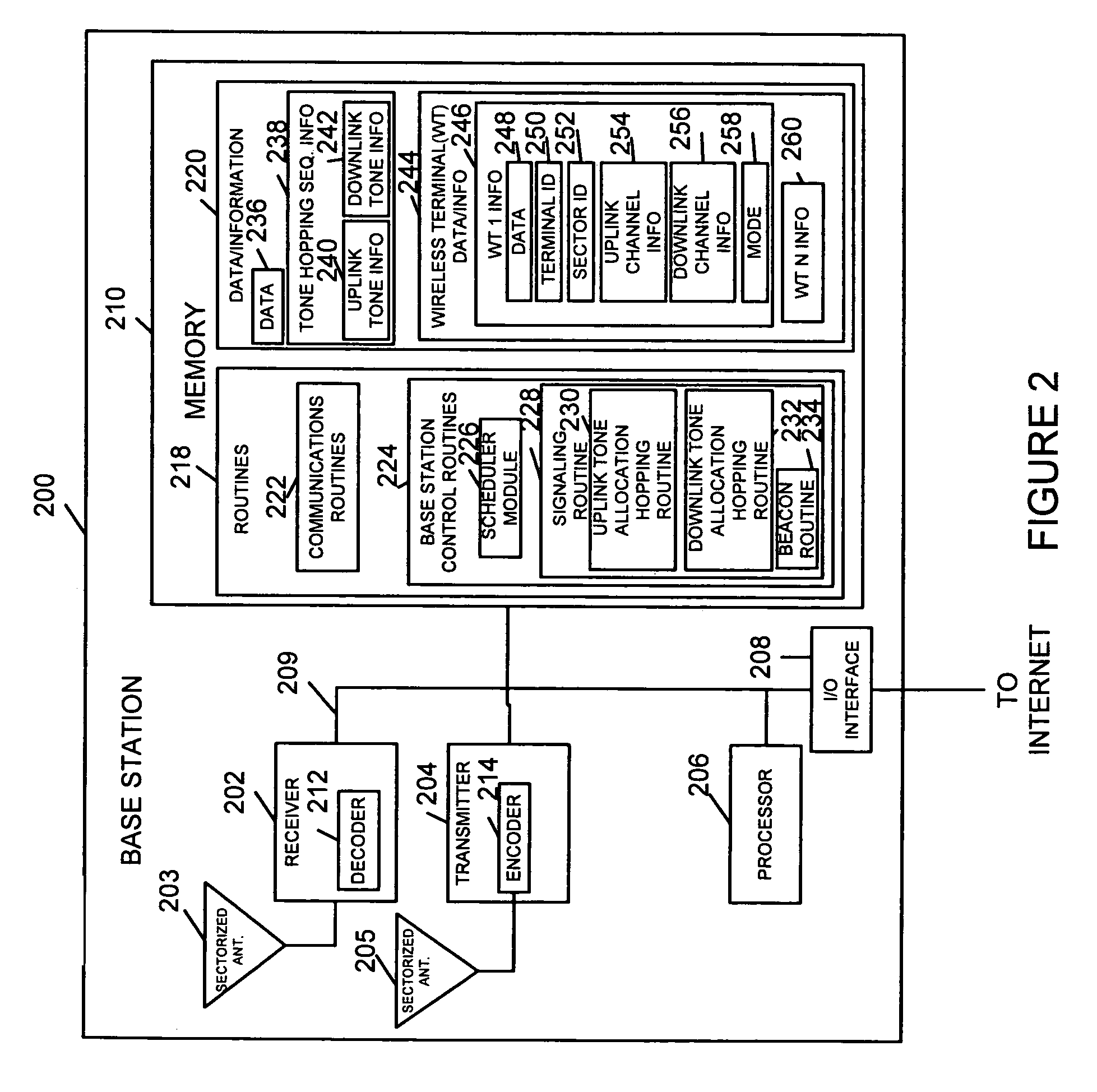Tone hopping methods and apparatus
a technology of tones and apparatus, applied in the field of communication systems, to achieve the effect of limiting the number of collisions
- Summary
- Abstract
- Description
- Claims
- Application Information
AI Technical Summary
Benefits of technology
Problems solved by technology
Method used
Image
Examples
Embodiment Construction
[0048]FIG. 1 shows an exemplary communication system 100 implemented in accordance with the present invention including multiple cells: cell 1102, cell M 104. Note that neighboring cells 102, 104 overlap slightly, as indicated by cell boundary region 168, thereby providing the potential for signal collisions between signals being transmitted by wireless devices in neighboring cells. Each cell 102, 104 of exemplary system 100 includes three sectors. Cells which have not be subdivided into multiple sectors (N=1), cells with two sectors (N=2) and cells with more than 3 sectors (N>3) are also possible in accordance with the invention. Cell 102 includes a first sector, sector 1110, a second sector, sector 2112, and a third sector, sector 3114. Each sector 110, 112, 114 has two sector boundary regions; each boundary region is shared between two adjacent sectors. Sector boundary regions provide the potential for signal collisions between signals being transmitted by wireless devices in nei...
PUM
 Login to View More
Login to View More Abstract
Description
Claims
Application Information
 Login to View More
Login to View More - R&D
- Intellectual Property
- Life Sciences
- Materials
- Tech Scout
- Unparalleled Data Quality
- Higher Quality Content
- 60% Fewer Hallucinations
Browse by: Latest US Patents, China's latest patents, Technical Efficacy Thesaurus, Application Domain, Technology Topic, Popular Technical Reports.
© 2025 PatSnap. All rights reserved.Legal|Privacy policy|Modern Slavery Act Transparency Statement|Sitemap|About US| Contact US: help@patsnap.com



